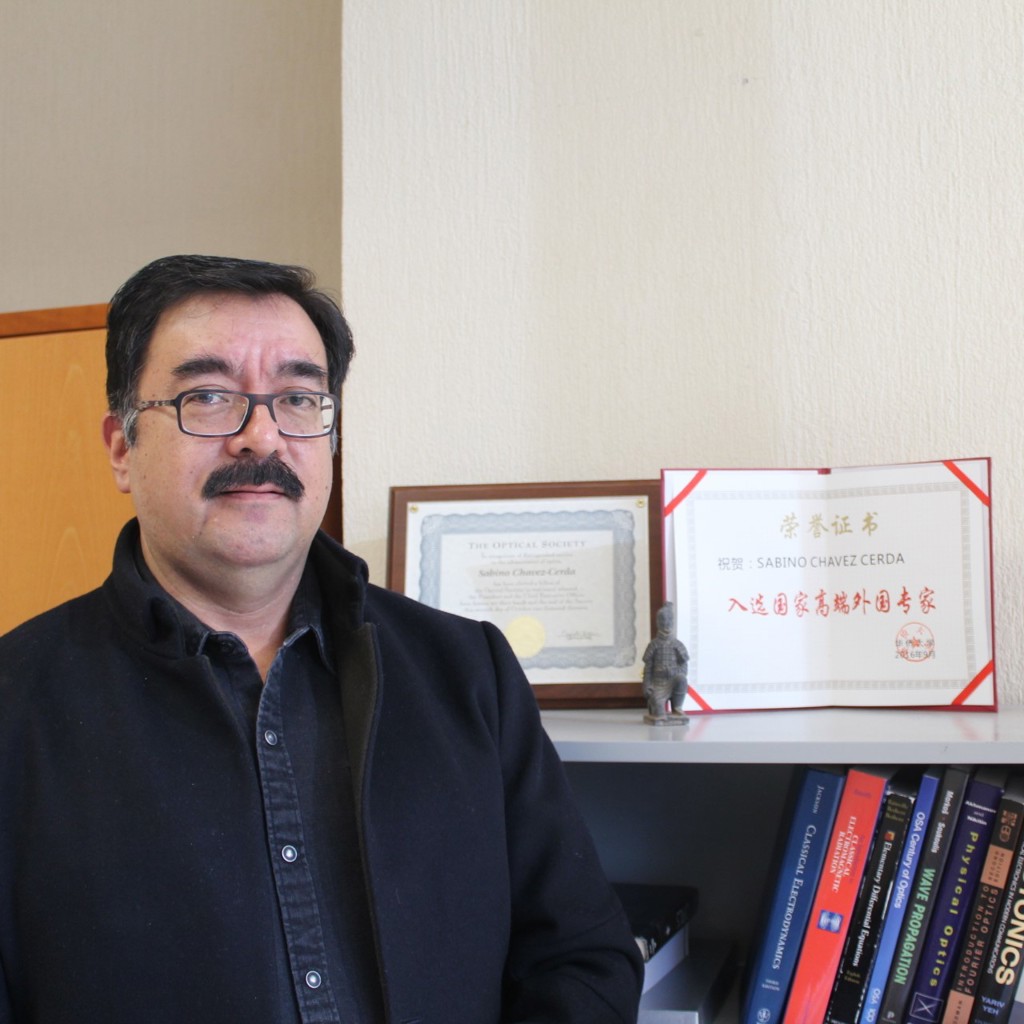Sabino Chavez-Cerda
Instituto Nacional de Astrofisica Optica y Electronica, Óptica y Electrónica, MexicoFor world-leading contributions to understanding exotic optical beams and service on OSA committees.

Sabino has wanted to be a physicist since he was 13 years old. His high school physics teacher showed him a photograph of a bubble chamber, a vessel used to detect electrically-charged particles moving through it, and he was immediately captivated. Due to his interest and ability in chemistry, physics, and mathematics, his father suggested he consider a career in engineering, but Sabino was determined to be a physicist. His family was less than delighted with his decision, as the options to develop a scientific career in Mexico were scarce at that time However, Sabino persevered and continued his studies in physics.
In the beginning, Sabino wanted to specialize in atomic or nuclear physics, but soon learned that there was little future in Mexico in this area. This left him feeling a little hopeless, but then an enthusiastic teacher offered a course in optics and holography. Sabino did not know what holography was, but the teacher encouraged him to enroll. He ended up enjoying the course, which fueled his interest in optics and led him to pursue further studies. The teacher’s enthusiasm was a key motivator for Sabino and other students to study optics. Although the teacher was not 100% in the field of optics, he loved experimenting. Sabino says this course was a defining moment for him and that the teacher served as a mentor of sorts. He believes that a good mentor “does what he loves and tries to share that love with students.”
Sabino’s research is focused on developing the most complete theory on beam optics. His biggest challenge was to publish his alternative theory on Bessel beams, which better explained the observed phenomena. It took him nearly four years to publish his theory, but after publication, he has become a leader in the field of Bessel beams. Today, he, and his graduate students and colleagues, are demonstrating that the theory on Bessel beams can be extended to all known structured wave fields. One of his notable discoveries was when he learned that it was possible to determine the amount of orbital angular momentum of a vortex beam using a triangular aperture. Originally, he tried to publish this as an experimental method, but the reviewers wanted a physical explanation. After three years, he was able to determine the physics behind the phenomenon and the paper has now received a lot of attention and citations.
Sabino was able to make the explanation simple and easy to understand which he believes contributed to the high-level of attention the paper received. This demonstrates the best advice that he received during his PhD – you should be able to explain your research to an eight-year-old child. He compares this with the Einstein quote “If you can’t explain it simply, you don’t understand it well enough.”
Sabino is excited for the future of optics in Mexico. He says that professional growth can be difficult in a place with limited resources, but the community in Mexico continues to make new discoveries and publish papers in the field. He also notes that OSA has been an important resource in making him feel part of the optics community. He advises up-and-coming researchers to “have perseverance and self-confidence” in what they do and to “try to prove to [themselves] that their research is correct.” He also notes that it is important to “be open to criticism and use it to learn more and improve.”
Profile written by Jeanette Gass
